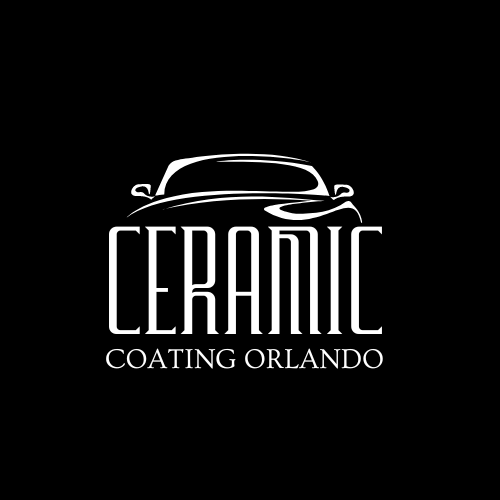Ceramic Coating for Wheels: Enhancing Durability and Shine
Ceramic coating for wheels is a specialized service designed to protect and enhance the appearance of vehicle wheels. Applying a ceramic layer to the rims provides a robust barrier against various contaminants like brake dust, road salts, and tar, which are notorious for diminishing the shine and integrity of standard wheel finishes. This service not only imparts a lasting gleam but also simplifies cleaning efforts due to its hydrophobic properties, causing water and dirt to bead up and roll off with ease.
The robust nature of ceramic coatings ensures that wheels maintain their pristine condition for longer periods compared to traditional wheel protection methods. While waxing provides temporary shine and protection, ceramic coatings bond at a molecular level with the wheel surface, providing more durable and long-term resistance against scratches, heat, and UV damage. The selection of a ceramic coating service should be informed by an understanding of the different types and grades of coatings available, their respective application processes, and the aftercare required to uphold the protective qualities over time.
Key Takeaways
Ceramic coating offers long-term protection for wheels against contaminants and damage. This service surpasses traditional protection methods in durability and ease of maintenance. An informed choice in ceramic coating service will depend on understanding various product types and proper aftercare.
Benefits of Ceramic Coating for Wheels
Ceramic coating offers wheel protection and visual enhancement. These coatings are composed of high-quality materials designed to withstand the rigors of the road, ensuring that wheels maintain their appearance and integrity over time.
Enhanced Durability
Ceramic coatings are renowned for their hardness and resistance to elements. They bond with the wheel surface at a molecular level, forming a shield that is resistant to chemicals, heat, and UV rays. This robust layer helps reduce the risk of scratches, chips, and wear from road debris.
Chemical Resistance: Protects against acidic contaminants and corrosive substances. Heat Resistant: Can withstand high temperatures without degrading. UV Protection: Prevents fading and oxidation from sun exposure.
Improved Aesthetics
The visual appeal of wheels is significantly improved with a high-gloss finish that ceramic coatings provide. The clear coat also enhances the depth and clarity of the wheel’s color and pattern.
Glossy Finish: Offers a deep, reflective shine. Color Preservation: Amplifies the wheel's original hue and pattern.
Ease of Cleaning
A ceramic-coated wheel repels water and dirt, making it easier to clean. The hydrophobic nature of the coating creates a
self-cleaning effect where contaminants are less likely to stick to the surface.
Hydrophobic Properties: Water beads up and rolls off, taking dirt with it.
Reduced Dirt Adhesion: Keeps wheels cleaner for longer periods.
Types of Ceramic Coatings
Ceramic coatings for wheels offer a robust barrier against environmental contaminants and reduce maintenance needs. They are categorized based on their application process and durability levels.
Professional-Grade Coatings
Professional-grade ceramic coatings are high-quality solutions applied by certified technicians. They usually consist of
SiO2 (silicon dioxide), which provides long-lasting protection that can extend up to several years. These coatings often come with a warranty and require specialized tools and expertise for application, ensuring maximum bond with the wheel surface.
Key features include:
Durability: 2-5 years.
Application: Certified professionals only.
DIY Ceramic Coatings
DIY ceramic coatings are designed for consumers seeking a hands-on approach to wheel protection. They are generally more user-friendly and can be applied without professional equipment, though thorough preparation of the wheel surface is still necessary. While they may not last as long as professional-grade options, they offer significant resilience against dirt and grime.
Key features include:
Durability: 6-12 months Application: At-home installation with guidance from product instructions.
Application Process
The application process of ceramic coating for wheels is a meticulous procedure meant to provide long-term protection and shine. Proper preparation increases the coating’s effectiveness, while precise application and adherence to curing times ensure optimal durability.
Preparation Steps
Cleaning: Wheels must be thoroughly cleaned to remove all dirt, brake dust, and grime. Use a high-quality wheel cleaner and a soft-bristle brush to get into all crevices. Decontamination: Iron fallout and tar deposits must be eliminated. Apply an iron remover and use a clay bar for a smooth surface. Drying: Wheels should be fully dried to prevent water spots under the coating. A microfiber towel or an air blower can be used for effective drying.
Application Techniques
Product Selection: Utilize a ceramic coating that is specifically formulated for wheel surfaces. Applicator: Use a suede applicator or a soft foam pad for even distribution. Product Application: Apply the ceramic coating in a thin, even layer. Move in a systematic pattern, such as wiping side to side and then top to bottom to ensure full coverage.
Curing Time Requirements
Initial Curing: Allow the coating to bond with the wheel surface, which usually takes about 1 to 2 hours.
Full Curing Period: Avoid exposure to water and contaminants for at least 24 hours. The coating typically achieves full hardness within 5 to 7 days.
Maintenance and Care
Proper maintenance ensures the longevity of the ceramic coating on wheels, protecting the investment made in the service. It requires regular cleaning to prevent buildup and inspections to address any potential issues early on.
Routine Cleaning Tips
Frequency: Wheels should be cleaned on a bi-weekly basis to remove dirt, brake dust, and contaminants.
Cleaning Agents: Use a pH-neutral wheel cleaner specifically designed for ceramic coated wheels.
Tools: Utilize a soft-bristle brush for gentle scrubbing and a microfiber towel for drying.
Technique: Rinse wheels with water, apply cleaner, gently scrub, and rinse again avoiding high-pressure hoses that can damage the coating.
Inspection and Touch-Up Guidelines
Timeline: Inspect the coating monthly for any signs of wear or damage.
Touch-Up Criteria:
Surface beading: Check water beading on the surface. If water no longer beads, it may be a sign the coating needs a touch-up.
Visual Inspection: Look for scratches or nicks in the coating that may need repair.
Professional Assessment: If damage is detected, consult a professional for repair options to maintain the integrity of the ceramic coating.


TESTIMONIALS
Wow! So happy with how my car looks after getting the ceramic coating! The people there really knew their stuff and helped me out. They took their time and made sure everything was done right. Now, my car shines like crazy and feels protected. Totally recommend them!
Michael D. (verified customer)
Super impressed with the ceramic coating service! My car looks amazing and shiny. The team was really nice and made the whole process easy. Now, I feel like my car is ready to take on anything. Definitely coming back!
Brian W. (verified customer)
Get In Touch



Facebook